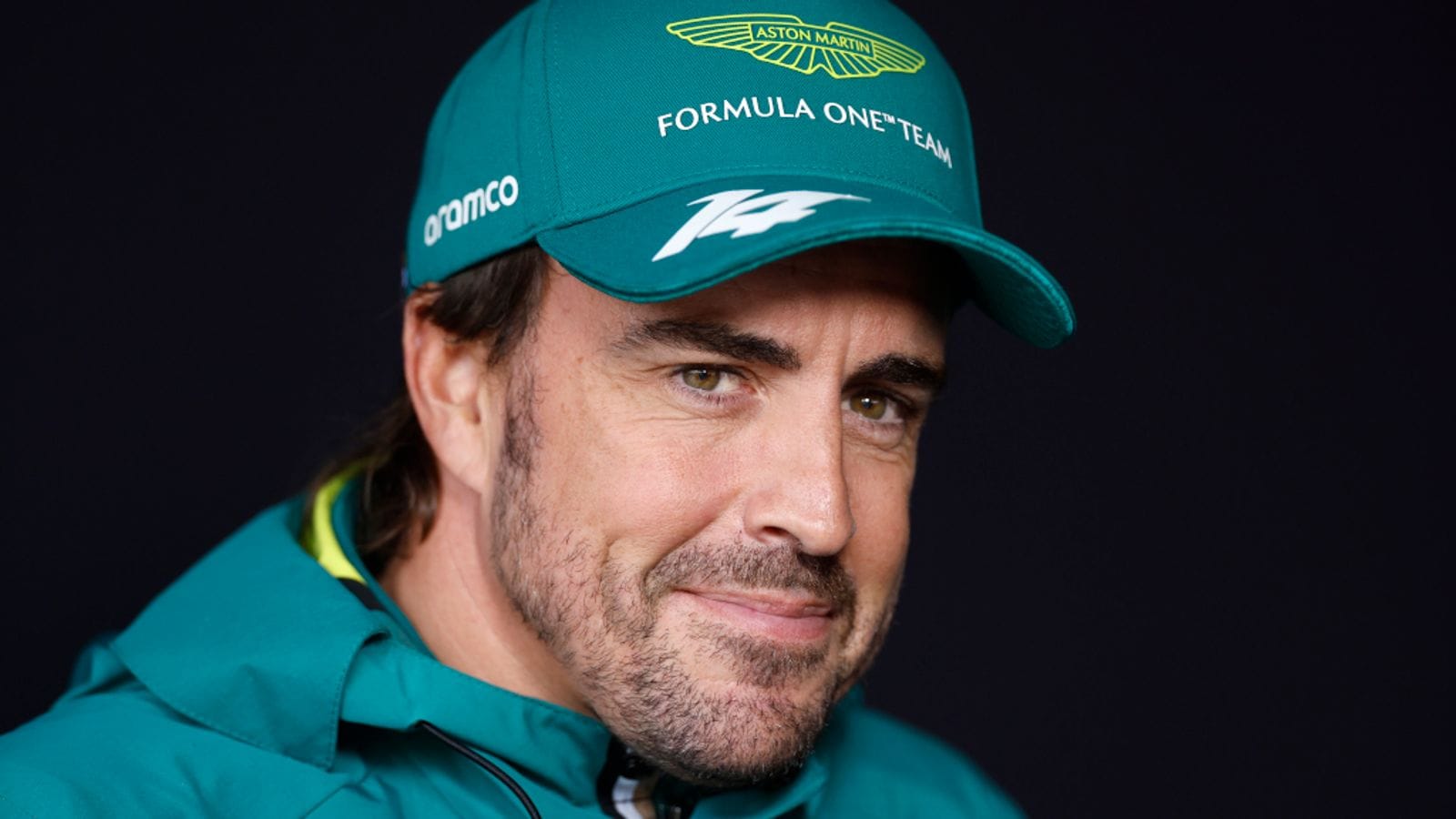Fernando Alonso: The Spanish Matador of Formula 1
Fernando Alonso, a name that reverberates through the high-octane world of motorsports, stands as a testament to unwavering determination and unparalleled skill.

I. Introduction
Fernando Alonso, a name that reverberates through the high-octane world of motorsports, stands as a testament to unwavering determination and unparalleled skill. Born on July 29, 1981, in Oviedo, Spain, Alonso has etched his legacy on the racetracks of Formula 1 with indelible tire marks. From the moment he stepped into the cockpit, Alonso’s impact was huge. His rise from karting circuits to the pinnacle of F1 was nothing short of extraordinary. As a young prodigy, he honed his craft in karting championships, capturing titles and announcing his arrival with screeching engines and lightning-fast turns.
But it was in the realm of Formula 1 that Alonso truly left his mark. His tenure with Renault catapulted him to global prominence. In 2005 and 2006, he clinched back-to-back World Drivers’ Championships, defying the odds and outpacing seasoned rivals, including a young Kimi Raikkonen and the great Michael Schumacher. Alonso’s finesse behind the wheel, tactical brilliance, and unyielding spirit made him a force to be reckoned with. Beyond the checkered flags, Alonso’s charisma transcended the racetrack. Whether navigating the treacherous streets of Monaco or conquering the legendary Suzuka circuit, Alonso’s name echoed through grandstands and pit lanes alike.
As we delve into the life and career of this Spanish Matador of Formula 1, we unravel a saga of triumphs, near misses, and audacious comebacks. Buckle up; the Alonso chronicles await—a symphony of speed, adrenaline, and unyielding passion.
II. Early Years in Karting and Car Racing
Fernando Alonso’s journey into the world of racing began amidst the roar of tiny engines and the smell of rubber on asphalt. Karting, the grassroots discipline of motorsports, served as his training ground—a place where raw talent met the unforgiving curves of the track. As a young boy in Oviedo, Spain, Alonso strapped on his helmet and gripped the steering wheel of his first kart. The adrenaline surged through his veins as he navigated hairpin turns, learning the delicate balance between speed and control. His innate feel for the kart’s dynamics set him apart from his peers. Alonso wasn’t just racing; he was dancing with the asphalt, orchestrating moves that would shape his destiny.
Alonso’s ascent was meteoric. Locally, he dominated regional karting circuits, leaving rivals in his wake. His name echoed across Spanish tracks, a promise of victories yet to come. But Alonso wasn’t content with local laurels; he hungered for more. On the national stage, he faced stiffer competition. Spain’s karting elite challenged him, pushing him to refine his technique. Alonso responded with podium finishes, championship titles, and a growing reputation. His relentless pursuit of excellence caught the attention of racing aficionados beyond Spain’s borders. And then came the world championships—the ultimate proving ground. Against international prodigies, Alonso showcased his finesse. The roar of engines drowned out doubt as he clinched titles, etching his name alongside legends. The karting world bowed to the Spanish sensation, recognizing his mastery of the craft.
The leap from karts to cars was both exhilarating and daunting. Alonso’s transition mirrored a fledgling bird leaving the nest. In 1999, he spread his wings and soared into the Euro Open by Nissan—a pivotal moment in his career. The Euro Open was no ordinary race; it was a gateway to the world of car racing. Alonso’s eyes blazed with determination as he strapped into the cockpit. The roar of the engine replaced the familiar karting hum. With precision born from countless laps, he attacked the circuit. Victory wasn’t a mere possibility; it was destiny.
And destiny yielded. Fernando Alonso emerged triumphant, hoisting the Euro Open trophy. His victory reverberated through paddocks and pit lanes. The karting prodigy had become a force in car racing, and the world took notice. That day, Alonso didn’t just win a race; he announced his arrival—a matador in the bullring of motorsports, ready to face the fiercest opponents on the grandest stages. And so began the next chapter: Fernando Alonso, the Spanish matador, hurtling toward Formula 1 glory.
III. Formula 1 Debut with Minardi
In the annals of Formula 1 history, there are many tales of underdogs defying the odds, and then there’s Fernando Alonso’s debut season with Minardi. The year was 2001, and the Spanish sensation found himself behind the wheel of a car that was more David than Goliath—a humble Minardi PS01. Minardi, a team known for its tenacity and passion, had scraped together the resources to make it onto the grid. Australian entrepreneur Paul Stoddart’s acquisition breathed new life into the struggling outfit. But this wasn’t just any season; it was the last hurrah for the roaring V10 engines—a symphony of power and noise that would soon fade into F1 history. Alonso, a karting prodigy turned rising star, stepped into the cockpit. The PS01 wasn’t a contender for podiums; it was a survivor. Yet, against all odds, Alonso made it respectable. His driving transcended the car’s limitations. At the season opener in Melbourne, Alonso crossed the line in 12th place, a modest result, but one that spoke volumes. The German Grand Prix saw him achieve his best finish, a commendable 10th place.
But Alonso’s journey didn’t end with Minardi. Renault, recognizing his potential, signed him as a test driver for the 2002 season. It was a pivotal role—one that allowed him to immerse himself in the intricacies of F1 machinery. As he fine-tuned setups, analyzed data, and provided crucial feedback, Alonso improved his skills. His promise didn’t go unnoticed. In 2003, Renault promoted him to a race seat. The young Spaniard was ready to take on the world. Little did anyone know that this was just the beginning—the prologue to a career that would see him become a double World Drivers’ Champion, a legend in the making.
IV. Championship Glory with Renault
Fernando Alonso’s tenure with Renault marked a golden era—a symphony of engineering brilliance, strategic mastery, and sheer determination. In 2005 and 2006, the Spanish matador etched his name in Formula 1’s annals, securing back-to-back World Drivers’ Championships.
The 2005 Season: A Duel with Raikkonen
Alonso’s Renault R25 danced through circuits, its blue and yellow livery a blur of speed. The season unfolded as a fierce battle between Alonso and McLaren’s Kimi Räikkönen. The Spaniard’s consistency paid dividends. He clinched seven victories, including a memorable win at his home Grand Prix in Spain. Alonso’s calculated approach—combining speed with tire management—earned him the title. He became the youngest World Champion at the time, a record that stood for years.
The 2006 Season: A Thrilling Showdown
The following year, Alonso faced renewed challenges. Michael Schumacher, the legendary Ferrari driver, sought redemption. The duel intensified. Alonso’s Renault R26 sparred with Schumacher’s scarlet machine. Wins in Bahrain, Monaco, and Canada kept Alonso in contention. The Brazilian Grand Prix became the decisive battleground. Alonso’s third-place finish secured his second consecutive title, making him the youngest two-time World Champion ever.
Alonso’s records transcended mere titles. He was the youngest pole-sitter, claiming the front spot on the grid with audacity and precision. His racecraft dazzled—victories at iconic circuits like Monza and Suzuka solidified his status as the youngest race winner.
V. Stints with McLaren, Ferrari, and McLaren-Honda
His journey through the upper echelons of Formula 1 took him to iconic teams—each chapter etched with drama, rivalry, and near-misses. Let’s delve into his time with McLaren, Ferrari, and the intriguing twists that defined his career:
McLaren (2007): The Battle with Lewis Hamilton
Alonso’s move to McLaren in 2007 promised fireworks. Paired with rookie sensation Lewis Hamilton, the team had two hungry lions vying for supremacy. The season unfolded in a crescendo of tension. Alonso’s relationship with the team soured as he felt Hamilton received preferential treatment. The Brazilian Grand Prix became the title decider. Alonso needed victory, but fate intervened. A gearbox glitch in qualifying left him sixth on the grid. In a nail-biting finale, Alonso finished third, missing the title by a single point. Kimi Räikkönen emerged as champion with Ferrari, and Alonso’s frustration simmered.
Ferrari (2010-2014): The Prancing Horse Pursuit
Alonso’s move to Ferrari was a dream realized. The scarlet red of Maranello embraced him, and the tifosi hoped for glory. In 2010, Alonso fought tooth and nail against Sebastian Vettel. The Abu Dhabi Grand Prix loomed large—a race that would decide the title. But fate played its hand again. Vettel’s rivals faltered, and he clinched the championship. Alonso’s Ferrari legacy was etched with near-misses.
McLaren-Honda (2015-2018): A Troubled Reunion
Alonso’s return to McLaren was poetic—a reunion with the team that once held promise. But the McLaren-Honda partnership faltered. Alonso’s frustration grew as the car languished at the back of the grid. His resilience shone through; he extracted every ounce of performance. Yet, podiums remained elusive.
The frustration bought by the collaboration with McLaren-Honda made Fernando Alonso take a break from Formula 1.
VI. 24 Hours of Le Mans and World Endurance Championship
Fernando Alonso embarked on a new chapter—one that intertwined endurance and adrenaline. His debut in the FIA World Endurance Championship (WEC) was marked by milestones, and the crown jewel was the legendary 24 Hours of Le Mans.
Le Mans Triumph (2018):
Alonso’s Toyota Gazoo Racing squad welcomed him to the hallowed Circuit de la Sarthe. The 24-hour marathon awaited—a grueling test of skill, strategy, and stamina. Alongside teammates Sébastien Buemi and Kazuki Nakajima, Alonso piloted the number eight car. Their mission: end Toyota’s long drought at Le Mans.
The race unfolded—a relentless battle against time, darkness, and fatigue. Alonso’s laps were exceptional, considering he had never driven these cars before. In a dramatic finale, the trio secured victory—an emotional triumph. Alonso’s name echoed through the annals of Le Mans history.
Back-to-Back Wins (2019):
The sequel was equally captivating. Alonso returned to Le Mans, this time defending his title. The No. 8 Toyota TS050 hybrid surged through the night, Alonso’s stints weaving magic. His familiarity with the car grew, and the rhythm of endurance racing became his heartbeat. Victory—again! Alonso, Buemi, and Nakajima stood atop the podium, their names etched alongside legends. Back-to-back Le Mans wins—an achievement that transcended mere races.
Alonso’s journey wasn’t confined to Le Mans. The WEC canvas stretched across continents—Spa-Francorchamps, Sebring, Fuji, and more. He clinched victories, set records, and embraced the endurance ethos. His dedication, professionalism, and hunger for success defined his WEC tenure. As he left the series, Alonso wore the crown of a World Champion—a testament to his versatility, resilience, and unwavering pursuit of perfection.
VII. Comeback with Alpine and the Switch to Aston Martin
After a two-year sabbatical, Fernando Alonso’s hunger for speed drew him back to the Formula 1 grid. The Alpine team welcomed him—a reunion with the sport that coursed through his veins. His return was more than a comeback; it was a symphony of determination.
The Alpine Reunion:
Twenty months after waving goodbye to Formula 1, Alonso made a sensational racing return with Alpine in 2021. The Spaniard became the first driver to have three separate stints with a single Formula 1 team—Renault (2003-06 and 2008-09), and now Alpine. His mission extended beyond racing; it was about using his immense experience to help develop Alpine’s challenger for F1’s radical new rules in 2022.
Aston Martin's British Racing Green:
In 2023, the blue of Alpine was replaced by the British Racing Green of Aston Martin. Fernando Alonso replaced Sebastian Vettel, after an unexpected retirement of the former champion of the sport. In his first year with Aston Martin, Fernando surpassed all expectations, finishing 4th in the Driver Championship with 208 points and stepping on the podium a staggering 8 times.
At 42 years old, Fernando Alonso continues to perform at an unbelievable level in Formula 1.
VIII. Conclusion
In summary, Fernando Alonso's career in motorsport is nothing short of legendary. From his humble beginnings in karting to becoming a two-time Formula 1 World Champion, Alonso has left an indelible mark on the sport. His exceptional talent, relentless determination, and unwavering passion for racing have earned him a place among the all-time greats of Formula 1.
As Fernando Alonso continues to push the boundaries of what is possible in motorsport, his legacy remains as a shining example of what can be achieved through talent, dedication, and sheer determination. Though his racing career may eventually come to an end, his legacy will live on as an inspiration to future generations of drivers and fans alike.
A radio message from the 2021 Qatar Grand Prix, summarizes how Fernando Alonso treated his racing career: "Tell Esteban to defend like a lion.". This is Fernando Alonso, the Spanish Matador who raced against time, leaving tire marks on the canvas of history.

